1) Visually check tyres.
2) Check dashboard for warning lights.
3) Listen for odd sounds.
Hands should always be in a ‘quarter-to-three’ (aka 9 o'clock and 3 o'clock) position.
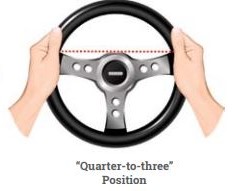
Note: There also exists other legitimate methods of steering, so your choice may vary based on your circumstance.
1) Adjust your seat height. You should be able to roughly see the front of your car.
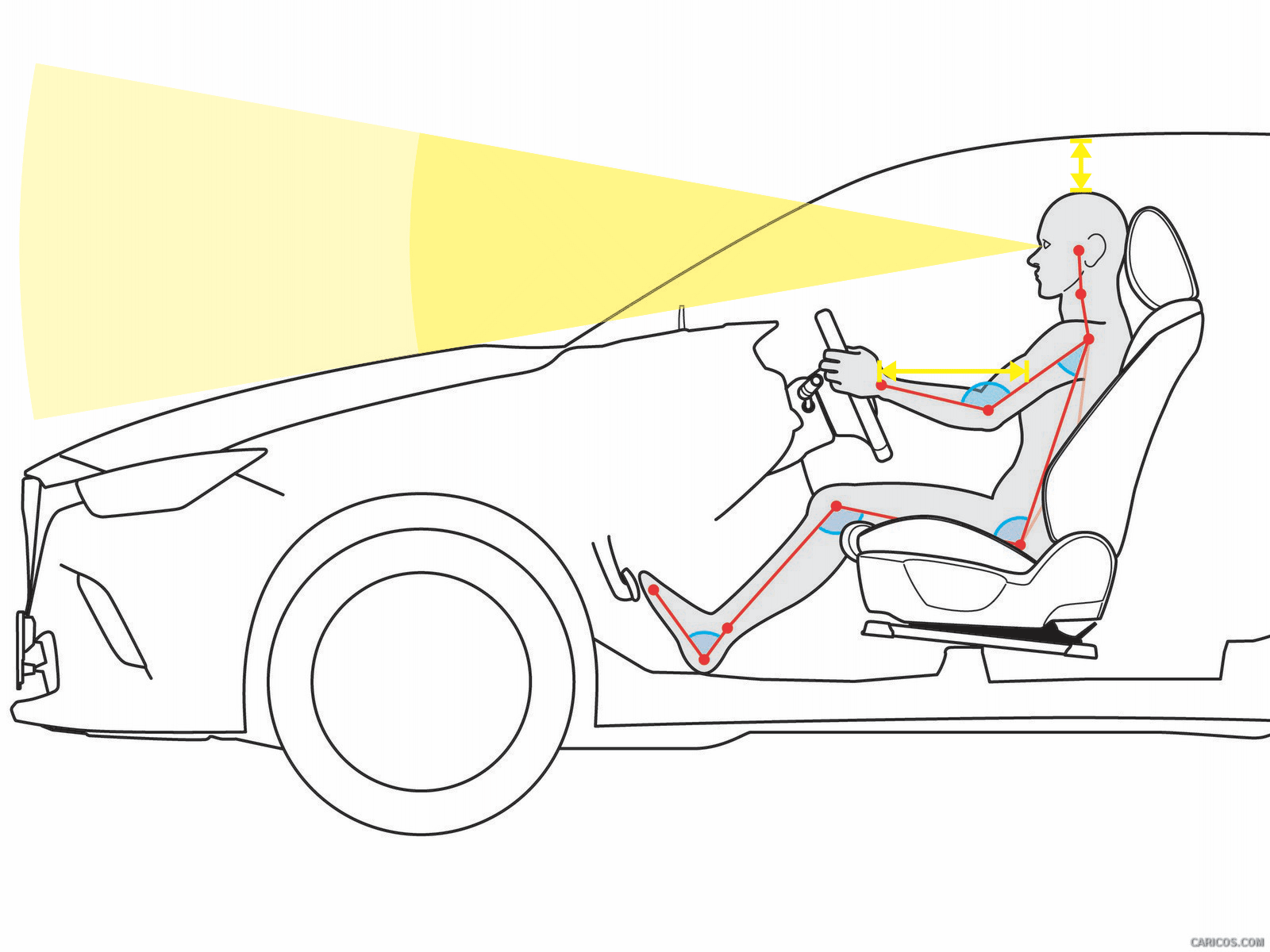
2) Rest your head to the back of your seat and place your hands on the steering wheel. When you extend your hands straight, your wrists should be able to touch the top of the steering wheel.
3) Adjust your seat until you can hold the steering wheel comfortably (in the 'quarter-to-three' position, with elbows bent at 90 degrees).
When negotiating a turn, you should swing the steering wheel in a moderate pace to the right/left in one smooth motion to the 9 o'clock or 3 o'clock position. The other hand would then cross over to where the initial hand was at the start, and continue to swing the steering in the same direction.
Do not bang the steering wheel. Hands should be holding the steering wheel as you follow through with the turn.
Keep hands in 'quarter-to-three' position when possible (especially after you've full lock your steering wheel, you can shift to the 'quarter-to-three' position while maintaining the steering wheel's turn).
Brake failure. Pump the foot brakes, pull the handbrake slowly and gently, attempt engine braking.
Skidding. Try to steer in the direction you want to go.
It is not advisable to run your petrol tank to near empty, as not only do you risk running out of fuel, it puts unnecessary stress on your fuel pump.
There are 3 types,
(1) Normal bus lanes
(2) Full-day bus lanes (yellow & red line marking)
(3) Bus-only lanes (continuous red line marking - refer to next section's diagram)
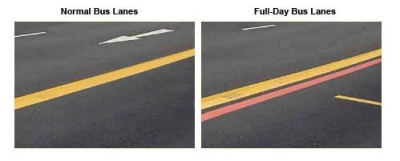
Image credit: LTA
It is illegal to use the bus lanes at these timings:
Normal bus lanes (Morning & Evening Peak Hours):
Monday - Friday
7:30am – 9:30am
5pm – 8pm
Full-day bus lanes (Whole day):
Monday - Friday
7:30am – 11pm
Saturday
7:30am – 11pm
Bus-only lanes (At all times)
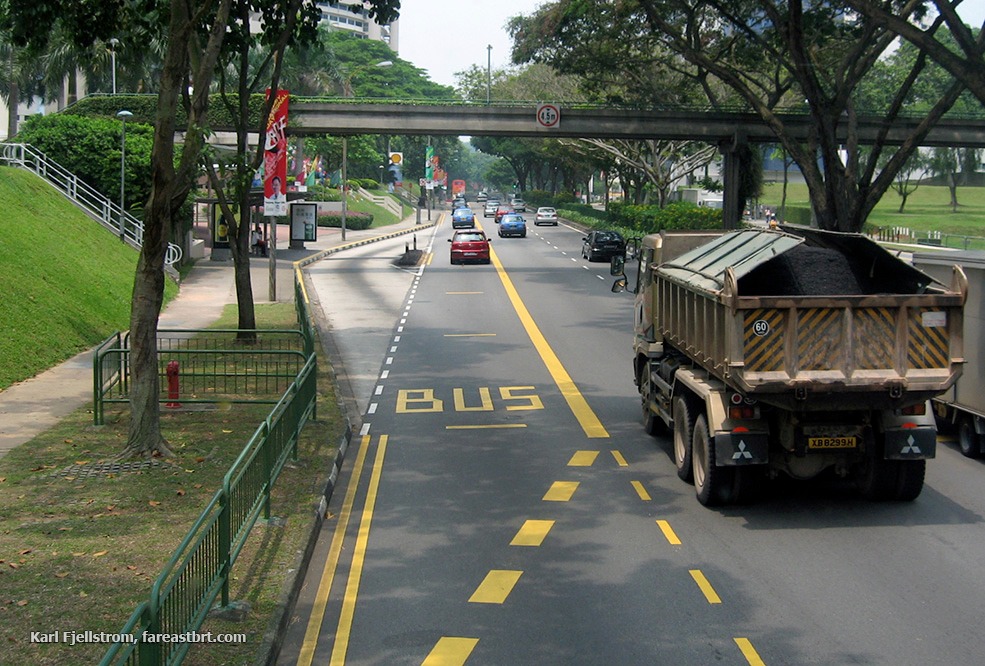
Normal bus lane
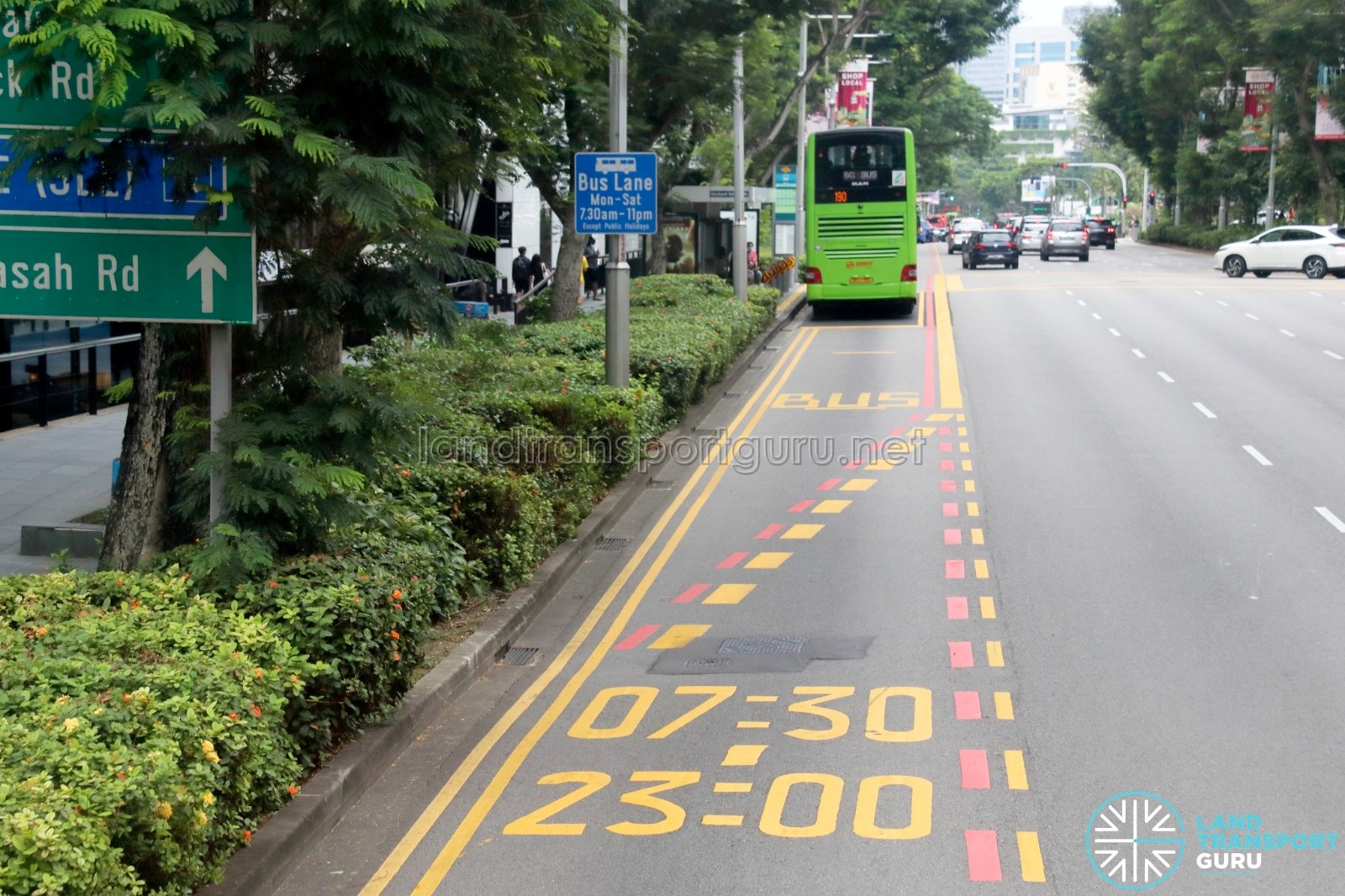
Full-day bus lane
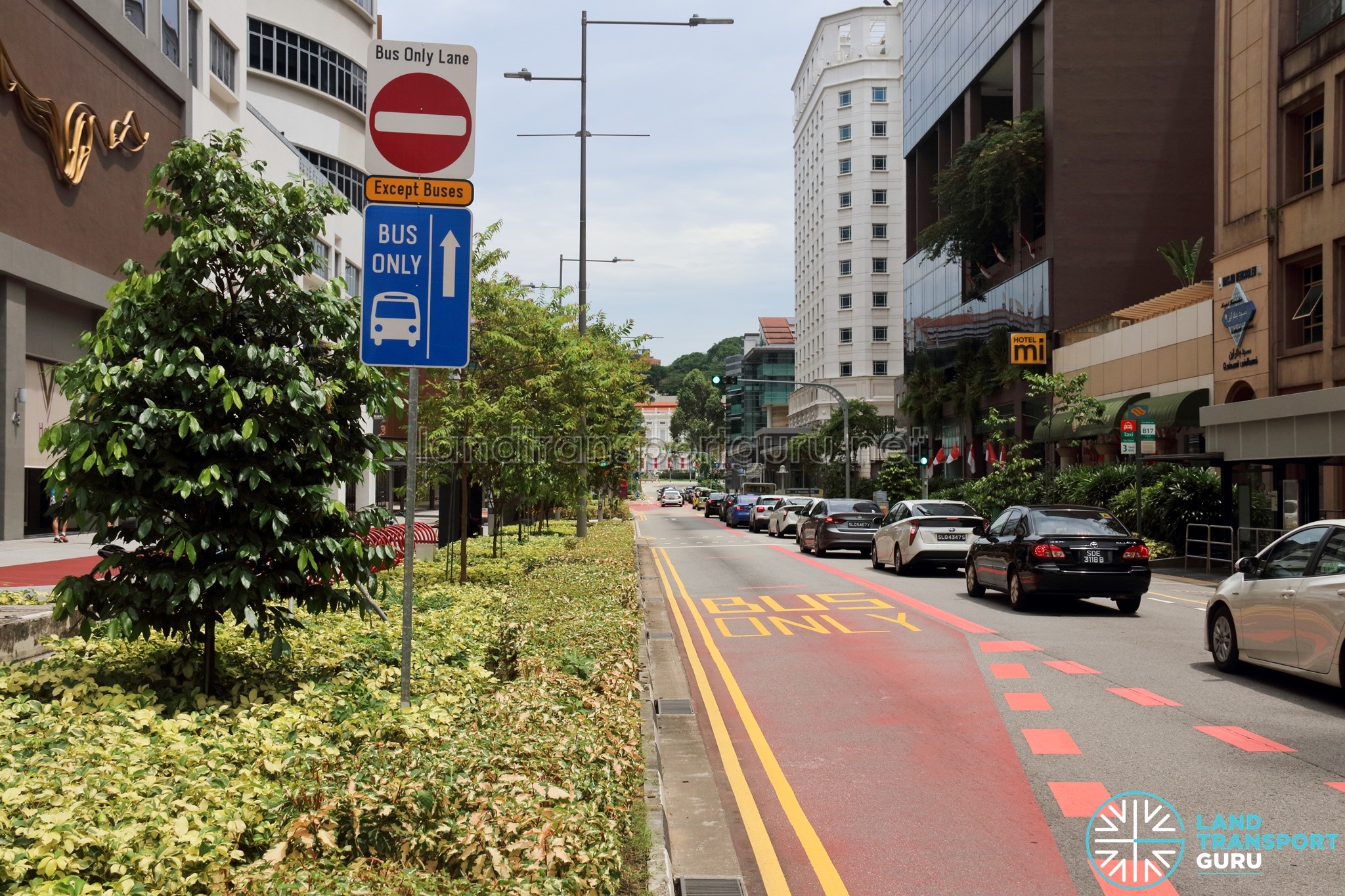
Bus-only lane
Bus stops. If a bus stop is at an operating bus lane, or where the sign says "No Stopping Except Public Buses", you are not allowed to stop for drop-off. For all other bus stops, you are allowed to stop for drop-off.
Bus Priority Box. Buses are likely to just dash out, be careful. Also, it is okay to stop inside the box at the traffic light. If bus is exiting, your should stop before the Give Way line. You are not allowed to stop inside the box.
Bus Only Road. As implied, bus-only roads are only meant for buses and other authorised vehicles.
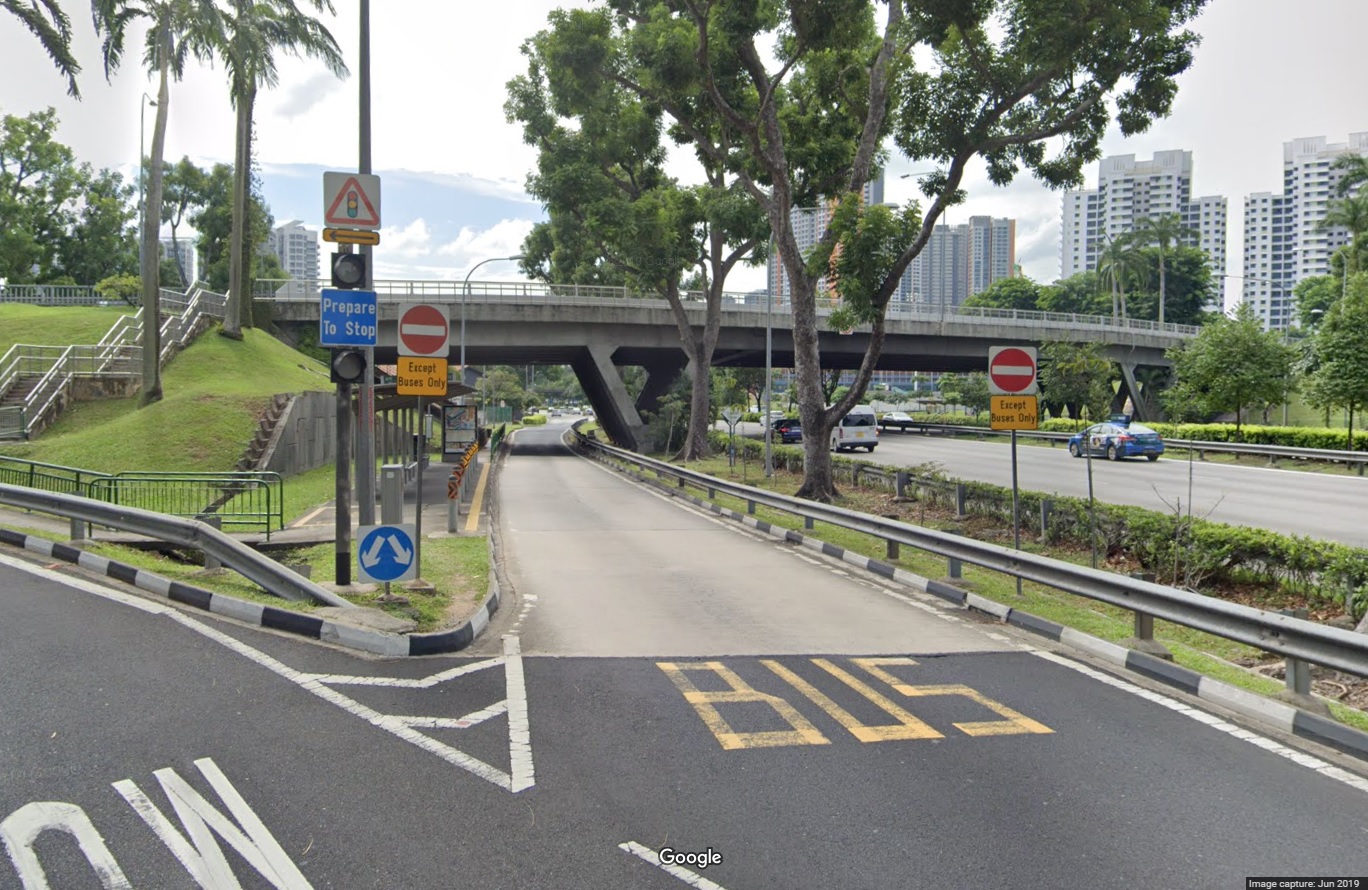
Bus-Only Road
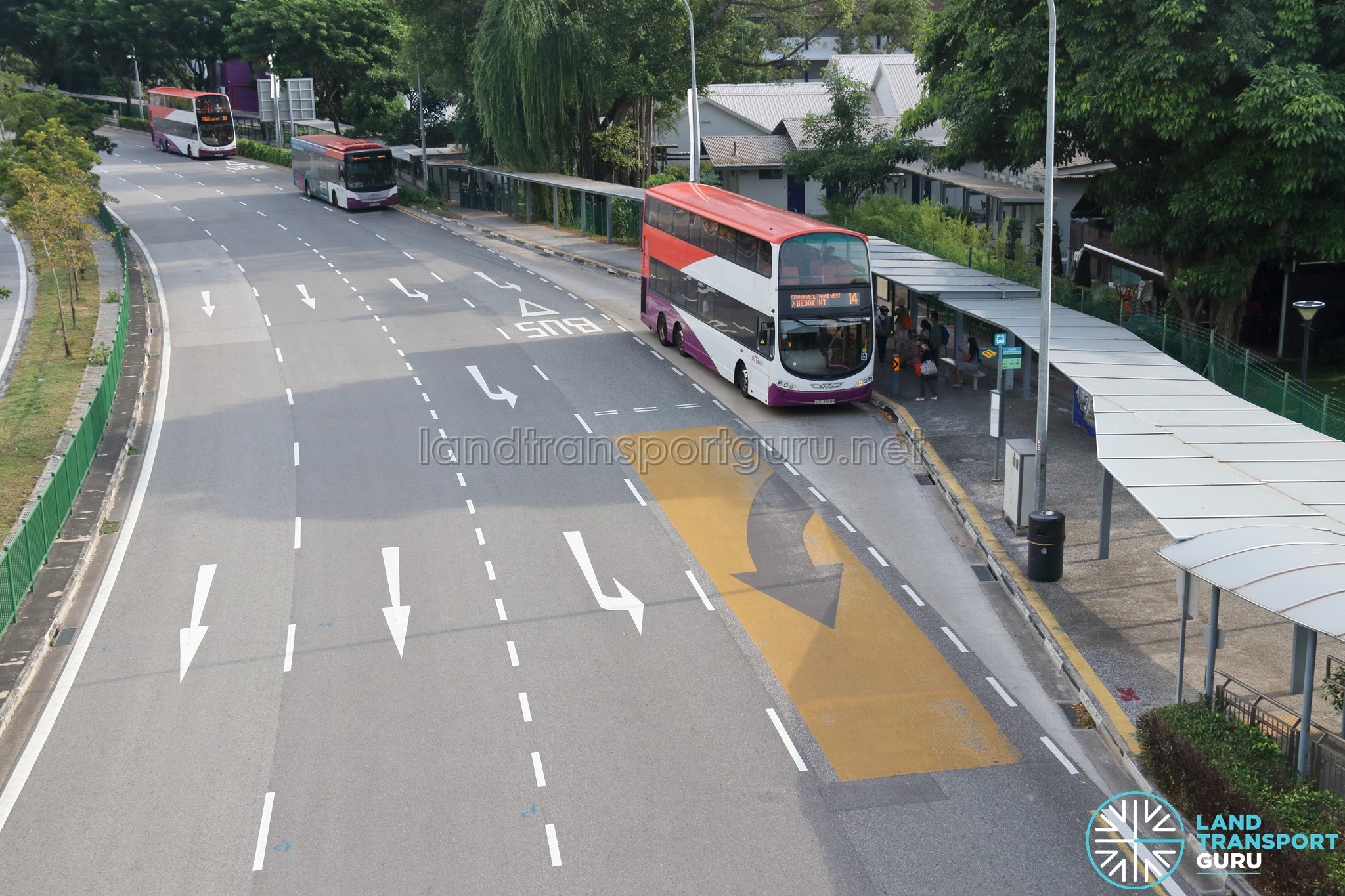
Bus Priority Box

Cut in line: Slow down and give them room to merge into your lane.
Tailgate: Let tailgater pass as soon as you can. Don't make any impulsive lane changes.
Honks: Ignore them if they are honking you unnecessarily.
Flash your hazards once or twice (something relatively new, people may not understand).
1) Generally stop before zebra, and before give-way line.
2) Look at left/right of zebra crossing.
3) Look for oncoming vehicles.
4) Look for u-turning vehicles.
5) If in doubt, slow or stop.
1) Look for oncoming straight traffic (at least a certain distance away).
2) Look for pedestrians on the right side.
3) If in doubt, DO NOT TURN.
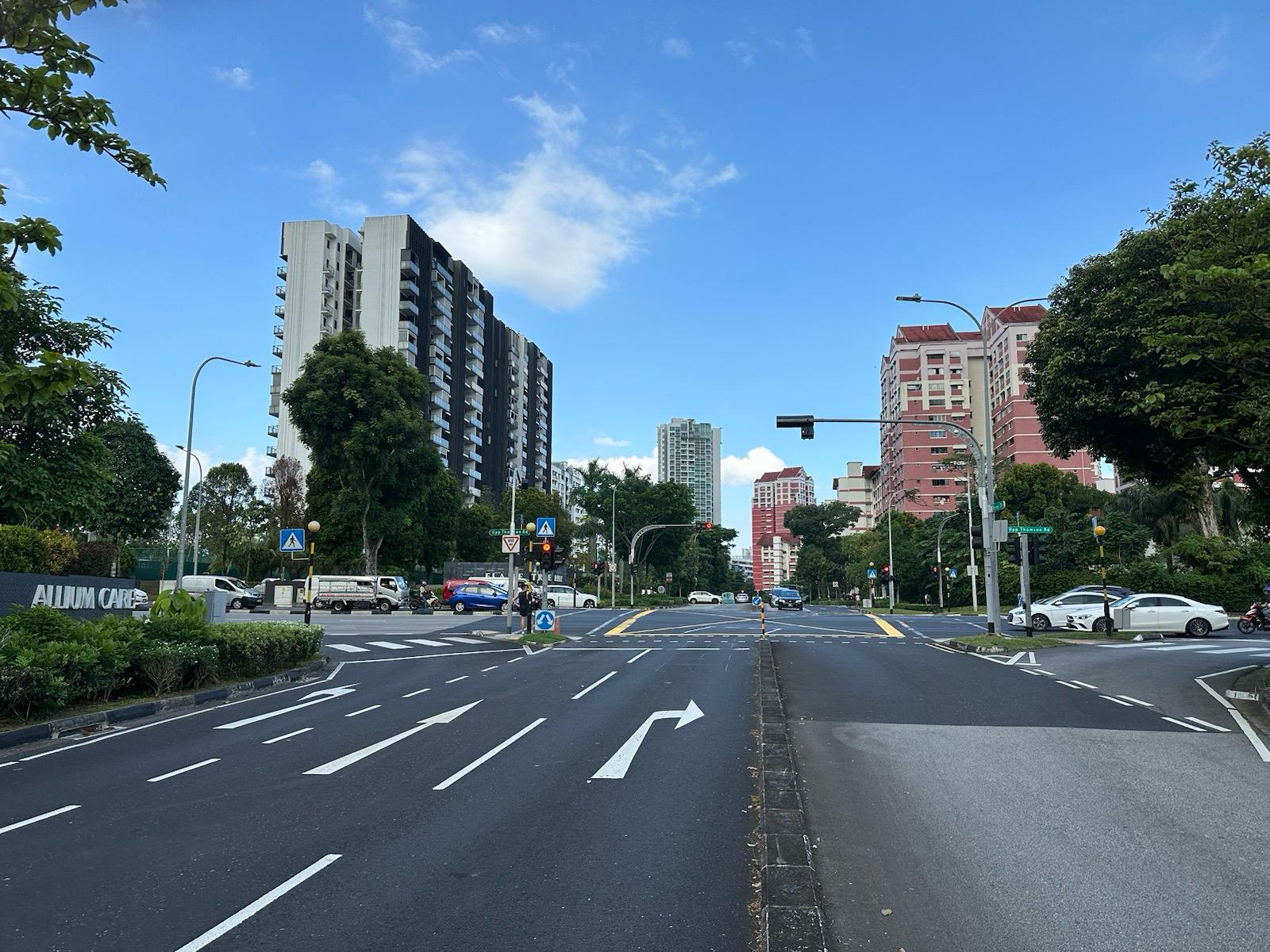
Turning Right
(1) Turning at the rightmost lane, turn to the rightmost lane on the other side.
(2) Turning at the 2nd rightmost lane, turn into the 2nd rightmost lane.
Do take note of the road arrows, whether it's a go straight only, go straight or turn right arrow or a turn right only arrow.
Turning Left
Same as the above.
When in doubt, stay in the lane you’re in relative to the direction of turn (i.e. if you’re in the second lane from the left when you’re turning left, you should also end up in the second lane from the left.), applies to 3 lanes turning into 4 lanes, etc.
At all times, even if the cars behind you honk, don't be pressured to turning if you are unsure. Many accidents happen because people turn when they are unsure. If there is a green arrow, wait till the green arrow comes up.
RAG Arrows
With the new RAG arrows, you will have to stop behind the stop line (DO NOT go into the pocket). When the green arrow lights up, there should be no cars or pedestrians in your way and you can turn safely no matter what.

Green Light No Arrows
When there is green light but no arrows, only turn if there are no oncoming cars or pedestrians. If there is a dashed line (a waiting pocket), you are highly recommended to move your car up to the dashed line. Otherwise, you may be holding back the cars behind you.
1) Ensure safety from the above.
2) Signal your intention early.
3) Note that after signaling, drivers may change their behaviour to block you.
4) You should generally be a bit faster than the car you are merging in front of.
You should have your eyes on the road, but every few moments, take a quick glance at your rear view mirror and your side mirrors.
Car in-mirror position
If you're looking at the right side mirror, if the car is in the left part of the side mirror it is dangerous, if the car is in the right part of the side mirror it is generally ok to overtake.
Speed (Rate of change)
If the car is getting bigger = GETTING CLOSER, if the car is smaller/same = SAME OR GETTING FURTHER.
1) Be predictable.
2) Signal your intentions early and correctly.
3) Do not give false information.
4) Motorcyclists tend to split lanes, watch out before changing lanes or turning.
Up Slope
May need more gas, even some automatic transmission cars will roll back if slope is steep enough.
Down Slope
May want to gently press the brakes to control speed. Note that your braking distance is longer.
When approaching a roundabout, slow down and give way to the traffic on the right. Do not enter unless there is a safe gap in the roundabout. Be alert for pedestrians, cyclists and motorcyclists who may cross or enter the roundabout at any point.
Signal your intention early before entering or exiting a roundabout. For example, if you want to turn right at a roundabout, signal right before entering the roundabout and keep signaling until you exit. If you want to go straight ahead, signal left just before (give ample time to signal) you exit.
Exiting
Left signal = exiting
Right signal = continuing to go around
Where you should be going:
3 Lanes
(Refer to diagram below)
(1) Lane A (leftmost) to exit A - next exit
(2) Lane B (Center) to exit B - for those going straight
(3) Lane C (rightmost) to exit C - 3rd or 4th exit
2 Lanes
Stick to the leftmost lane if you want to take the next exit or go straight. Otherwise, keep to the right lane and upon entering, stay in the inner lane of the roundabout.
If in doubt or you cannot exit safely or in time, circle the roundabout again if you are on the lane that allows you to. Otherwise, exit, U-turn, and try again.
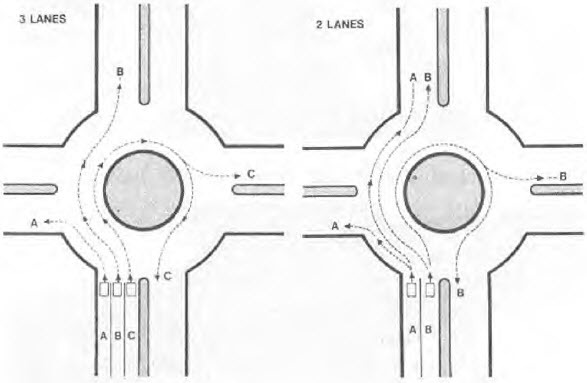
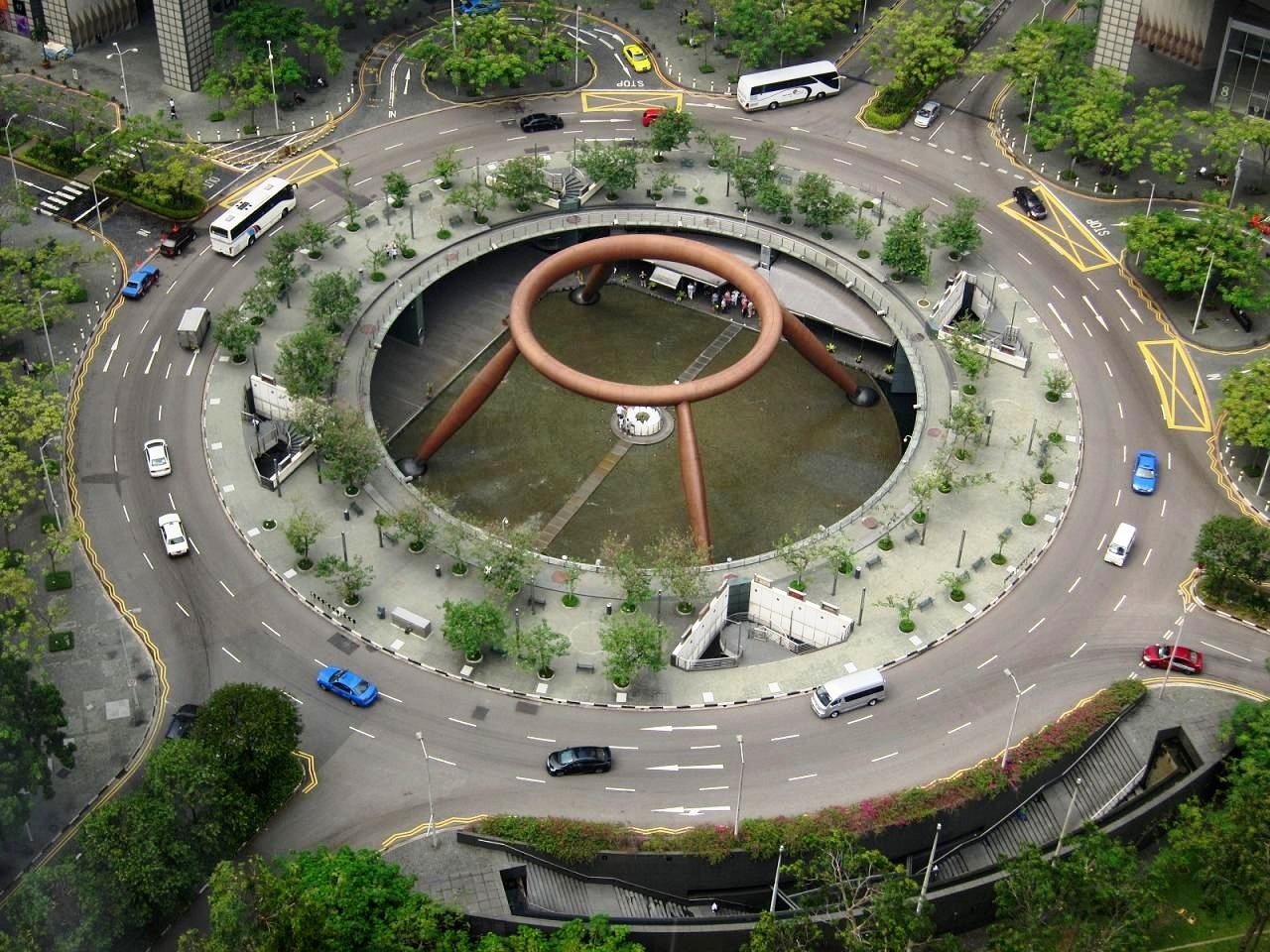
You are not allowed to use your mobile device while operating a vehicle. Specifically, the following 3 conditions must be met for it to be considered an offence:
1) The vehicle must be in motion
2) The driver has to be holding the device
3) The driver must be using a function on it
You should generally be at the same speed, or just slightly faster, than the car you're intending to merge in front of.
1) Ensure safety (no oncoming traffic).
2) Signal your intention early. Note that when you signal your intention, it does not mean that others are expected to give way to you. Unfortunately some drivers may even alter their behaviour to impede you. Be on the lookout for these things.
3) You should generally be a bit faster than the car you are merging in front of. Note that when you signal your intention, it does not mean that others are expected to give way to you. Unfortunately some drivers may even alter their behaviour to impede you. Be on the lookout for these things.
1) Immediately turn on your hazard lights to inform other motorists that something has gone wrong.
2) If your vehicle can still be safely controlled and moved, move slowly and safely to the shoulder of the expressway.
3) if your vehicle cannot be controlled anymore, then as safely, slowly and predictably as you can, come to a complete stop in the lane that you are in.
4) Display the triangle (dunno what the official word is) some distance (can check the recommended distance) after you have come to a stop.
5) Call for help by contacting recovery services.
Read the speed signs, or check Waze. Generally 90 km/h.
1) Lane 1 is reserved for overtaking vehicles only.
2) After overtaking, when safe, filter back to lane 2 or higher.
3) If a car behind you on lane 1 is going faster than you, you should yield, even if they are above the speed limit.
4) Yes, there are cars that stay on lane 1 perpetually, they are not doing the right thing.
1) Gradually make your way to the left-most lane of the expressway. Doing it early gives you more space and time to navigate there safely.
2) As the exit approaches, signal left to let other motorists know you are intending to exit.
3) Slow down to a comfortable speed to allow you to exit. A general rule of thumb would be around 40-70 km/h, slowing more as you approach the exit.
4) Be alert, because some exits are sloping, tightly curved, or both.
5) Exit the expressway.
Red Lots
Reserved for season parking holders all day, including Sundays and public holidays. Short-term visitors cannot park in these lots.
Red & White Lots (Bi-Coloured)
Reserved for season parking holders from 7:00pm to 7:00am, Mondays to Saturdays and whole day on Sundays and public holidays.
White Lots
Short-term visitors can park in these white lots during the operating hours of the car park.
Yellow Lots
Found in car parks located within the Restricted Zone. You will need to pay a high parking fee of $1.20 per half hour if you park at these car lots between 7:00am and 5:00pm, Mondays to Saturdays. Otherwise, normal parking fee of$0.60 per half hour is charged at these car lots after 5:00pm, including Sundays and public holidays.
Step 1: Position
Signal your intention, and align your car at roughly 45 degrees, as shown in the diagram below.
Step 2: Check mirrors
Check the mirror on the side of the parking lot that you are intending to park in. Let's call this the primary mirror. You should see the front, outer corner in your primary mirror, as shown in the diagram below.
Step 3: Reverse
Turn towards the parking lot, and reverse into the lot. Adjust your angle as necessary by keeping an eye on the primary mirror.
Step 4: Straighten
As you are almost in the parking lot, quickly straighten your car.
Step 5: Adjust
Adjust such that you are in the middle of the lot.
Note: There are various other methods to park, and therefore the following serves only as a guide for vertical parking.
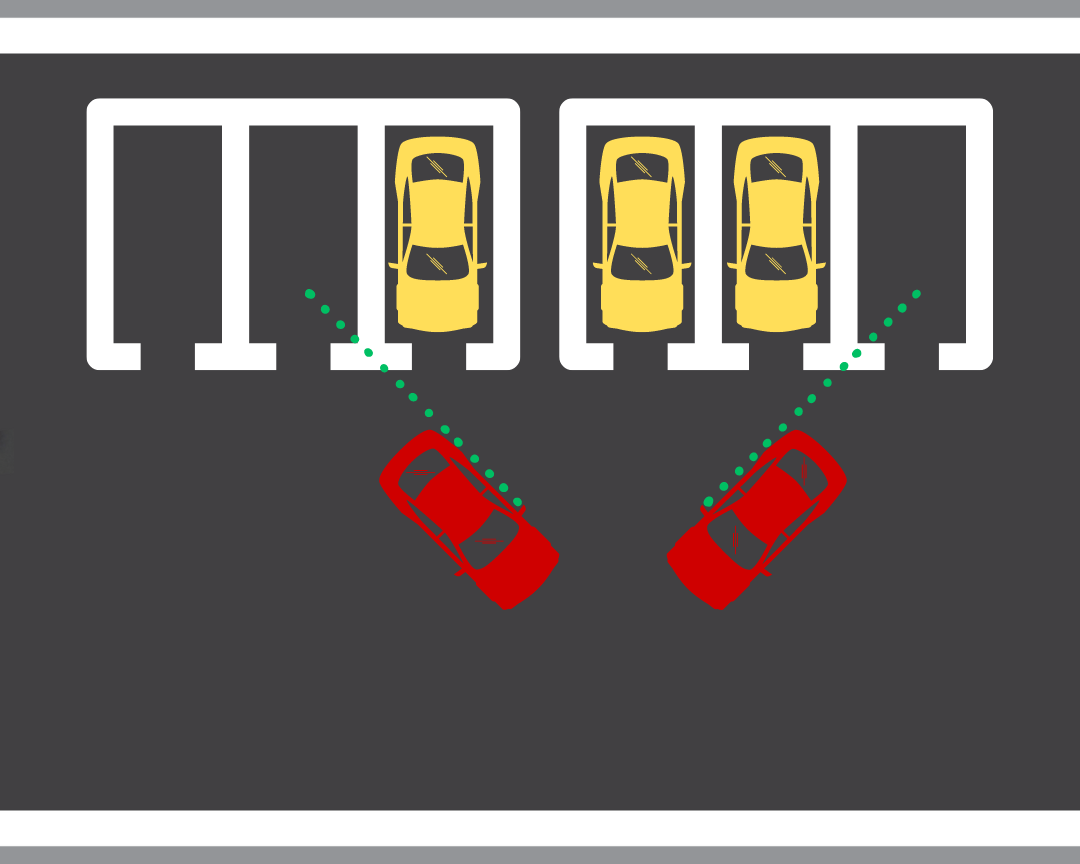
Step 1: Position
Signal your intention, and align your car at roughly 45 degrees, as shown in the diagram below.
Step 2: Check mirrors
Check the mirror on the side of the parking lot that you are intending to park in. Let's call this primary mirror. You should see the rear, inner corner in your mirror, as shown in the diagram below.
Step 3: Reverse
Gradually enter the lot in a straight line, until your car's front bonnet is clear of any obstacles (cars, walls, etc.) in front of you.
Step 4: Straighten
Steer away from the parking lot until your car is relatively straight.
Step 5: Adjust
Adjust such that you are in the middle of the lot.
Note: There are various other methods to park, and therefore the following serves only as a guide for parallel parking.

You are only allowed to park in a parallel parking lot on any road in the same direction as the traffic flow.
Engine and headlights cannot be left on if the vehicle is stationary. It doesn't apply if you're stuck in traffic.


.svg)





















.svg)
.svg)

